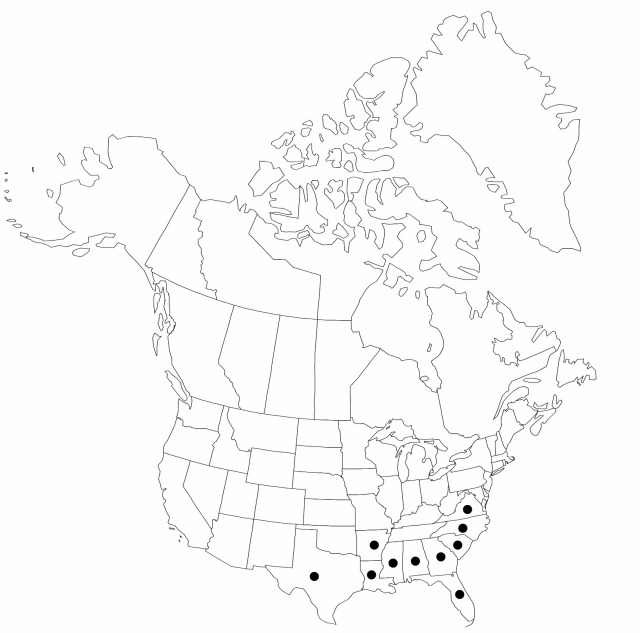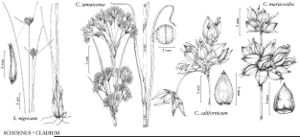Difference between revisions of "Cladium jamaicense"
Inst. Rei Herb. 1: 362. 1766.
FNA>Volume Importer |
FNA>Volume Importer |
||
| Line 11: | Line 11: | ||
|name=Cladium mariscus subsp. jamaicense | |name=Cladium mariscus subsp. jamaicense | ||
|authority=(Crantz) Kükenthal | |authority=(Crantz) Kükenthal | ||
| − | }}{{Treatment/ID/Synonym | + | }} {{Treatment/ID/Synonym |
|name=Schoenus cladium | |name=Schoenus cladium | ||
|authority=Swartz | |authority=Swartz | ||
| Line 29: | Line 29: | ||
|elevation=0–100 m | |elevation=0–100 m | ||
|distribution=Ala.;Ark.;Fla.;Ga.;La.;Miss.;N.C.;S.C.;Tex.;Va.;Mexico;West Indies;Central America;n South America. | |distribution=Ala.;Ark.;Fla.;Ga.;La.;Miss.;N.C.;S.C.;Tex.;Va.;Mexico;West Indies;Central America;n South America. | ||
| − | |discussion=<p>Cladium jamaicense is important as the dominant species in much of the Florida Everglades (K. K. Steward and W. H. Ornes 1975).</p> | + | |discussion=<p><i>Cladium jamaicense</i> is important as the dominant species in much of the Florida Everglades (K. K. Steward and W. H. Ornes 1975).</p> |
|tables= | |tables= | ||
|references={{Treatment/Reference | |references={{Treatment/Reference | ||
| Line 56: | Line 56: | ||
|publication year=1766 | |publication year=1766 | ||
|special status= | |special status= | ||
| − | |source xml=https://jpend@bitbucket.org/aafc-mbb/fna-data-curation.git/src/ | + | |source xml=https://jpend@bitbucket.org/aafc-mbb/fna-data-curation.git/src/8f726806613d60c220dc4493de13607dd3150896/coarse_grained_fna_xml/V23/V23_431.xml |
|genus=Cladium | |genus=Cladium | ||
|species=Cladium jamaicense | |species=Cladium jamaicense | ||
Revision as of 16:08, 18 September 2019
Rhizomes to 20 cm × 10 mm. Culms 1–3 m × 5–10 mm. Leaves: blades flat to broadly V-shaped, 5–11 mm wide, margins and midvein abaxially harshly scabrous with teeth visible to unaided eye. Inflorescences terminal (or lateral and terminal), 30–50 cm; 1st, 2d, 3d, and some 4th order branches, branches slightly flexuous. Spikelets in groups of 2–3(–6), narrowly ellipsoid to lanceolate; floral scales 5–6, the proximal chestnut brown, ovate to oblong-lanceolate, 2.5–3 × 2 mm, midvein conspicuous, lateral veins weak; stamens 2; anthers 2 mm, connective apices 0.1–0.2 mm; styles 2–2.5 mm; stigmas 1–1.5 mm. Achenes light greenish brown, ovoid, 2 × 1 mm, glossy, base vaguely 3-lobed, truncate, not flared or discoid, apex acute, irregularly rugulose longitudinally.
Phenology: Fruiting spring–summer.
Habitat: Coastal brackish and fresh marshes
Elevation: 0–100 m
Distribution

Ala., Ark., Fla., Ga., La., Miss., N.C., S.C., Tex., Va., Mexico, West Indies, Central America, n South America.
Discussion
Cladium jamaicense is important as the dominant species in much of the Florida Everglades (K. K. Steward and W. H. Ornes 1975).
